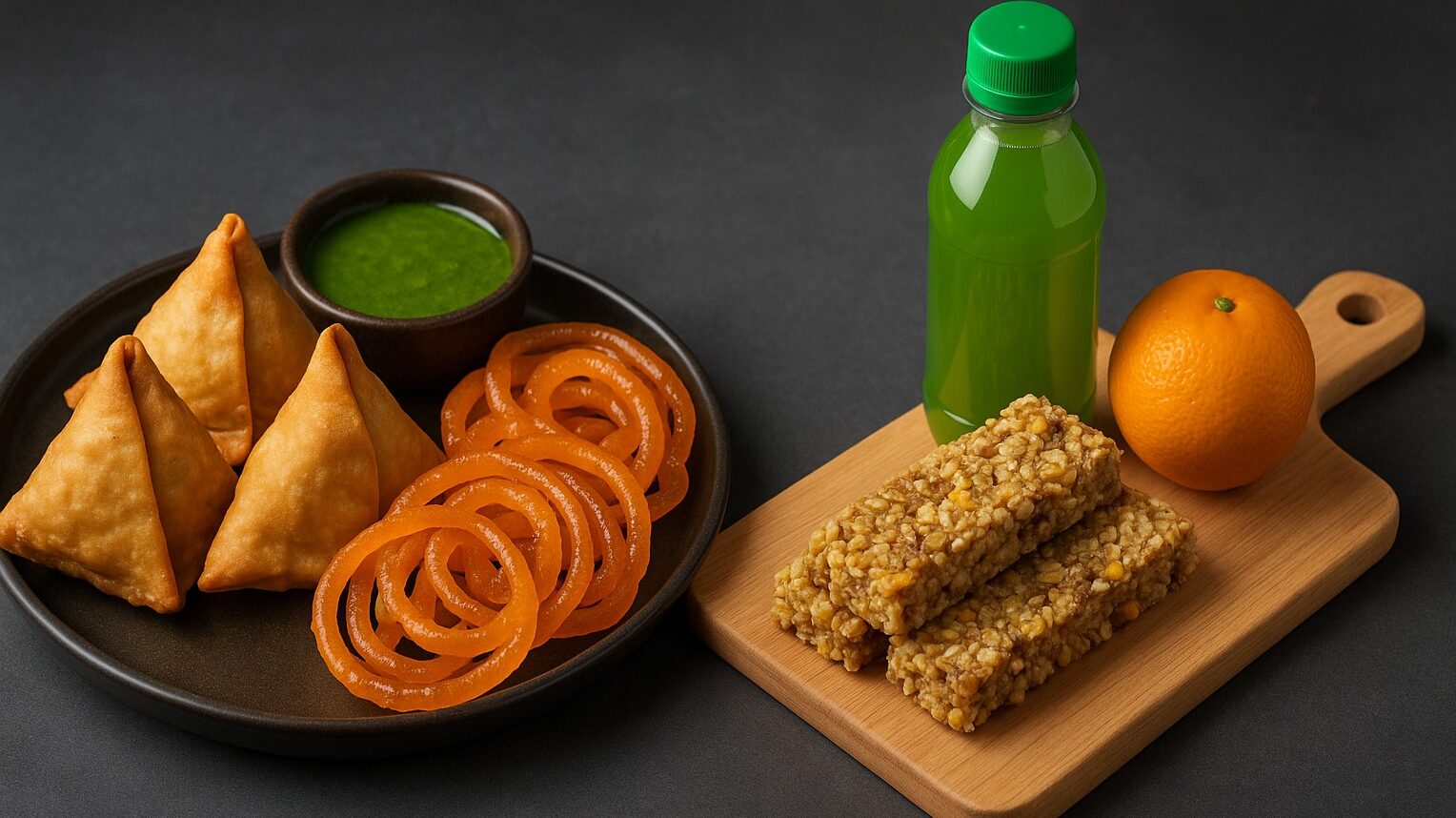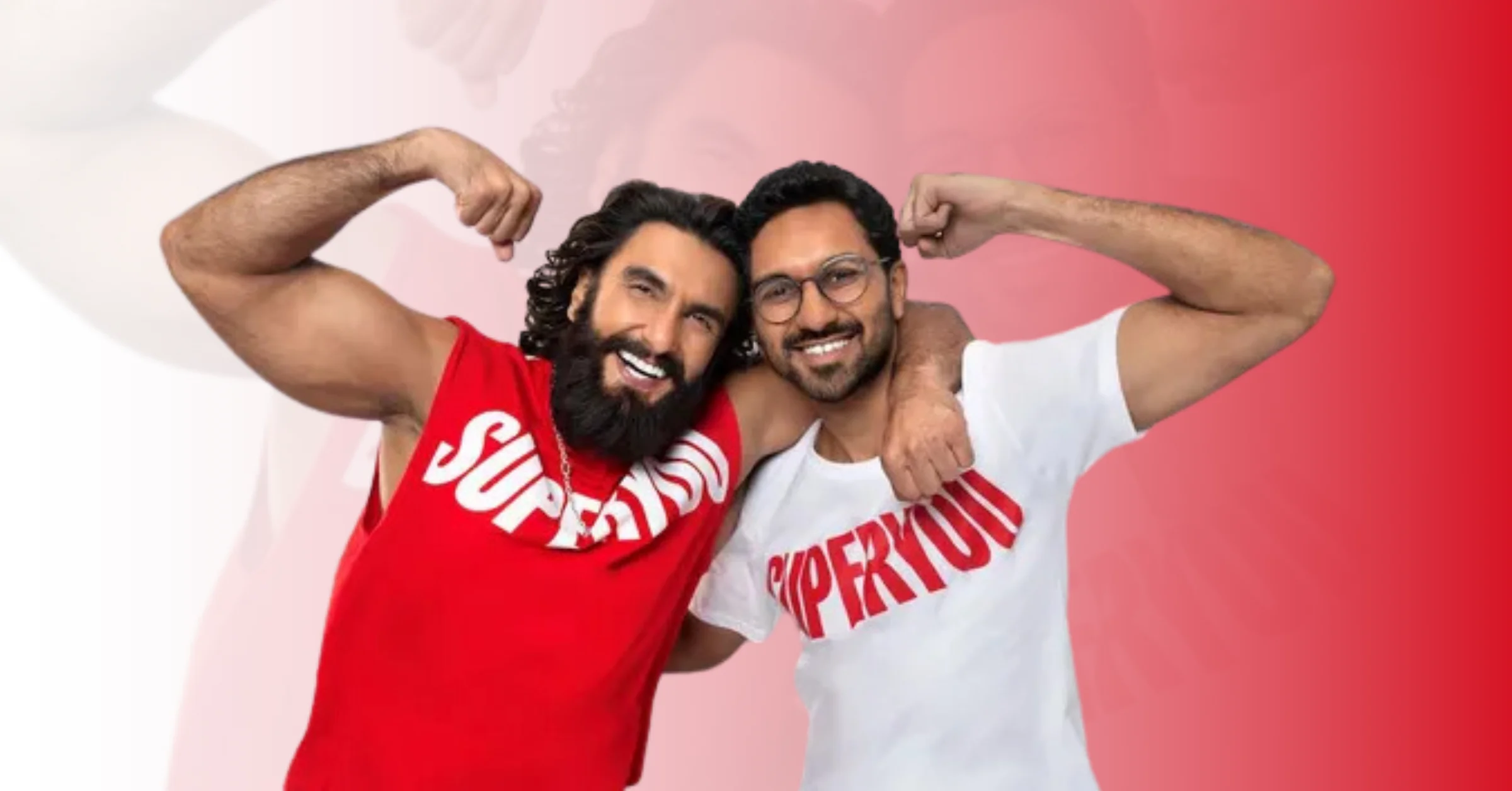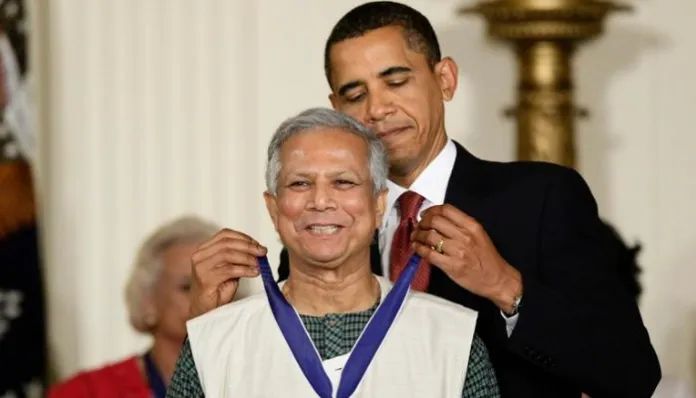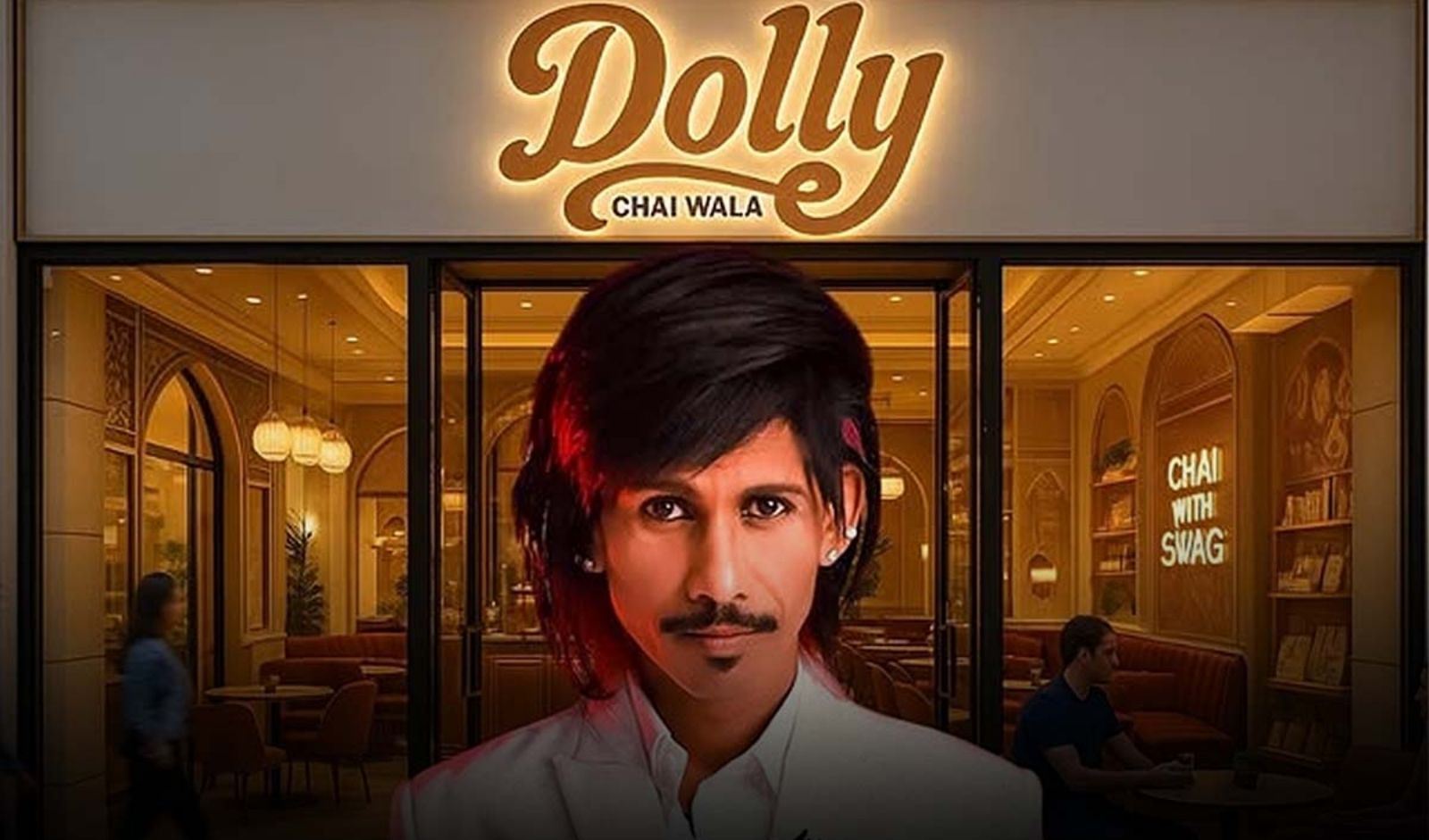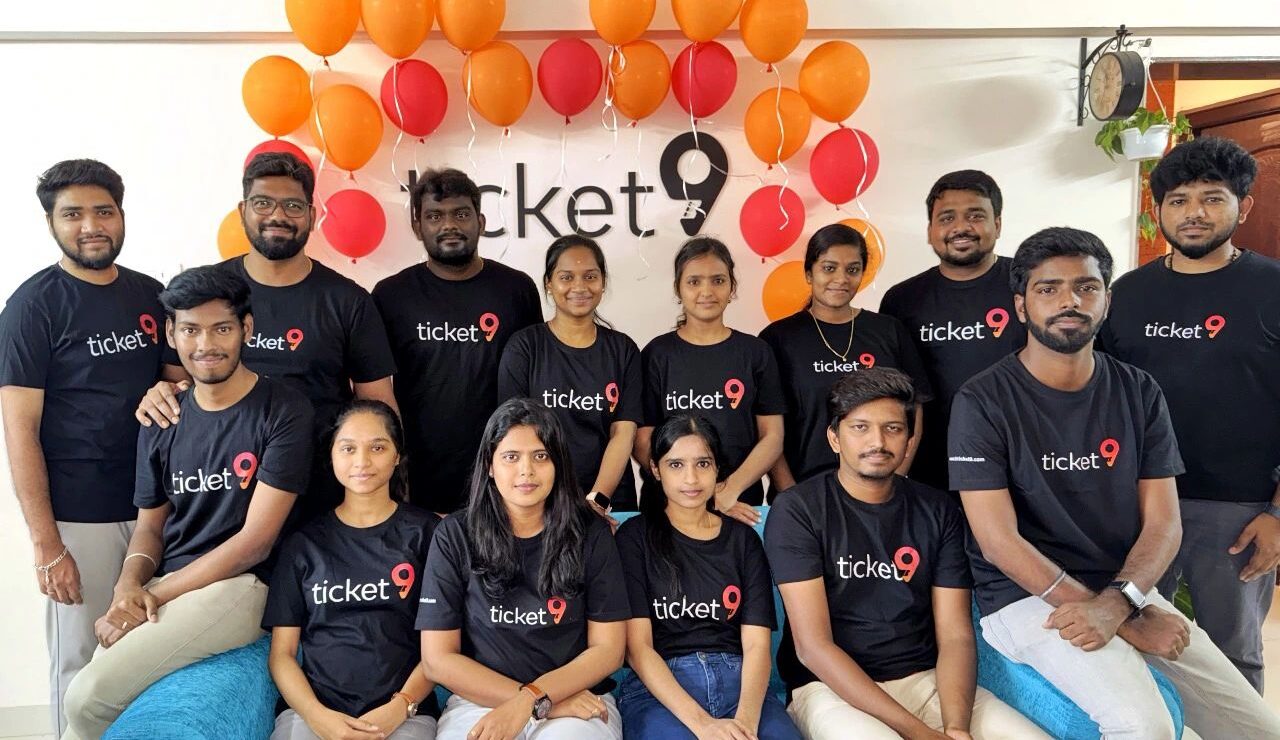Walk through any Indian city and you’ll find young professionals and students indulging in beloved snacks like samosas (fried pastry with savory filling) or jalebis (syrup-soaked fritters). These treats are part of urban culture, but recently they’ve come under intense scrutiny from health authorities.
Concerned by rising obesity, over one in five urban Indian adults is now overweight or obese, the Union Health Ministry issued advisories to display “oil and sugar” warning boards next to popular snacks such as samosas, kachoris, vada pav, gulab jamun and jalebis. The goal is to make people “aware about hidden fats and excess sugar” in these foods.
Some officials even compare the move to cigarette warnings, calling it the “beginning of food labelling becoming as serious as cigarette warnings”. “Sugar and trans fats are the new tobacco. People deserve to know what they’re eating,” said Dr. Amar Amale, a cardiologist, supporting the initiative. The message is clear: those golden samosas and shiny jalebis carry more than just flavor, they’re packed with ingredients that could harm long-term health.
What Makes Samosas and Jalebis Risky?
It’s no secret that these traditional snacks are deep-fried or sugar-drenched. A typical samosa is fried in oil (often re-used oil high in trans fats) and a standard jalebi is essentially refined flour fried and soaked in sugar syrup. Nutritionists point out that such foods are “calorie-dense, containing substantial saturated fat and added sugars, and offer minimal fibre or micronutrients”.
Consuming them regularly, especially in large portions, is linked to obesity and lifestyle diseases like diabetes and heart conditions. In fact, a Chennai-based study published in the American Journal of Clinical Nutrition found that people who ate a diet high in refined grains, the kind in samosa pastry and jalebi batter, were nearly eight times more likely to develop metabolic syndrome.
Health experts warn that frequent indulgence in these treats can set off a cascade of issues. “These high-calorie snacks contribute to obesity, which is a gateway to numerous chronic conditions,” cautions Dr. Rajiv Kovil, a diabetologist. He notes that a heavy diet of fried and sugary snacks leads to excessive calorie intake with minimal nutrition, potentially worsening digestion, triggering insulin resistance and fatty liver, and even affecting mood and immunity.

The World Health Organization has flagged trans fats, common in Indian street food frying as a major culprit, blaming them for over 77,000 cardiovascular deaths in India each year. Given such findings, it’s unsurprising the humble samosa now comes with a side of guilt.
According to a 2021 report by Swiggy, Indians ordered around 50 lakh (5 million) samosas that year, making it the country’s “most binged” snack.
The Health Halo of Modern Snacks Cracks
Interestingly, this debate has spotlighted an uncomfortable truth, many “modern” snacks and drinks marketed as healthy or convenient are no better for you. Indian youth today might swap samosas for granola bars, or jalebis for packaged juice, believing them to be wiser choices. But experts say that confidence is often misplaced.
“Ultra-processed food products are the real problem. And there is ample proof of that,” argues celebrity nutritionist Rujuta Diwekar. She questions why items like colas, chips and cookies, often aggressively advertised (sometimes by Bollywood stars or cricketers), don’t carry equally stark warnings. “Samosa and jalebi ne aapka kya bigada hai?” she quipped, “What harm have samosas and jalebis done?” suggesting that if health warnings are to be taken seriously, they should hit ultra-processed snacks first.
Her point resonates with many urban youngsters who see through the marketing glitz: a baked potato chip or a breakfast cereal might claim to be healthy, but can be just as high in salt, sugar or unhealthy fats as the old-school treats they replace.
Take granola bars, a favorite “on-the-go” breakfast or gym snack for many city dwellers. Despite their wholesome image, “granola bars, despite their rustic appearance, frequently contain high levels of sugar and unhealthy fats,” warns Dr. Collin Popp, a dietitian. Many bars are “just oats with sweeteners in a disguised form,” he says, noting that they can deliver more sugar than actual nutrition.
Indian experts concur. In a recent ranking of common foods for gut health, Dr. Saurabh Sethi, a Harvard-trained gastroenterologist, scored granola bars just 3 out of 10, remarking that though they come with flashy health promises, “it is often loaded with sugars and processed ingredients” that harm gut bacteria and mental clarity.
Packaged fruit juices and smoothies, frequently endorsed as vitamin-rich, are another wolf in sheep’s clothing. Dietitians point out that most commercial fruit juices are high in sugar and stripped of fiber, so drinking a bottle of juice can flood your bloodstream with as much sugar as a sugary soda.
Here is a simple calorie comparison chart based on typical serving sizes of the foods mentioned in the article. These are approximate values for reference and can vary depending on preparation.
| Food Item | Serving Size | Calories (approx.) |
|---|---|---|
| Samosa | 1 medium piece (~100g) | ~250 kcal |
| Jalebi | 1 piece (~40g) | ~150 kcal |
| Granola Bar | 1 bar (~40g) | ~180–220 kcal |
| Packaged Fruit Juice | 1 bottle (~250ml) | ~120–150 kcal |
| Energy Drink | 1 can (~250ml) | ~110–130 kcal |
| Cornflakes with Milk & Sugar | 1 bowl (~200g) | ~220–250 kcal |
| Namkeen (Salted Mix) | 1 handful (~50g) | ~250 kcal |
“Even cereals that seem healthy, like cornflakes or muesli, can cause a sudden rise in blood sugar” if they’re loaded with added sugar and refined grains, notes a report by the Times of India. These hidden sugars contribute to spiking insulin levels and, over time, to problems like high triglycerides and bad cholesterol.
Also Read: VOLTA: Zero-Commission EV Ridesharing in India
The allure of modern snacks is often supercharged by marketing. Food companies routinely promote ultra-processed products by promising health, energy, or even glamour, a trend public health advocates find troubling. “They sell happiness, they sell it as ‘this is the modern world’,” says Dr. Arun Gupta, head of Nutrition Advocacy in Public Interest India.
In the past, companies have enlisted movie stars to declare a packaged food just as good as a homemade meal. One recent ad even claimed a certain biscuit was equivalent to “home-made bread” for busy parents, drawing sharp criticism from nutrition experts. From energy drinks with sporty slogans to “diet” chips pitched as guilt-free, the health halo often cracks under scrutiny.
“Often unhealthy packaged food uses misleading advertisements and celebrity endorsements to influence consumer behaviour,” notes an Indian nutritionist, underscoring that marketing can mask a product high in fat, sugar, and salt.
| Parameter | Traditional Snacks (Samosa, Jalebi) | Modern/Celebrity-Endorsed Snacks (Granola Bars, Juice, etc.) |
|---|---|---|
| Calories & Density | Very high in calories; fried in oil or soaked in sugar; minimal fibre or nutrients. | Often marketed as “light” but can be calorie-dense; hidden sugars, refined carbs common. |
| Fats | High in saturated fats & trans fats (esp. if oil is reused); a key risk factor for heart disease. | Many contain unhealthy oils & trans fats under “vegetable oil” or “hydrogenated” names. |
| Sugar Content | Jalebi & similar sweets are sugar-heavy; lead to blood sugar spikes and insulin resistance. | Packaged juices & bars often loaded with added sugars, sometimes more than a soda. |
| Fibre & Nutrition | Very low fibre, few beneficial nutrients. | Sometimes fortified with vitamins, but fibre & real nutrients often minimal due to processing. |
| Degree of Processing | Made from basic ingredients (flour, sugar, oil) but cooked in unhygienic/poor-quality oil. | Highly ultra-processed; with preservatives, emulsifiers, artificial colours & flavours added. |
| Health Risks Identified | Linked to obesity, diabetes, cardiovascular disease, metabolic syndrome. | Same risks as above, plus concerns over food additives harming gut health & mental clarity. |
| Marketing & Perception | Seen as indulgence or guilty pleasure; no health claims; stigmatized after warnings by health ministry. | Marketed as healthy, convenient, “energising”; endorsed by celebrities, creating a misleading health halo. |
| Transparency (Labels & Awareness) | No labels on street food; you know what you’re getting but often unaware of portion sizes or oil quality. | Labels exist but can be misleading; ingredients disguised (e.g., hidden sugars under many names). |
| Additives & Chemicals | Generally none beyond ingredients (but may have poor hygiene & rancid oil). | Usually full of preservatives, synthetic colours, artificial sweeteners, and flavour enhancers. |
| Expert Opinion | Bad if eaten frequently & in excess; portion & frequency control advised. | Equally or more harmful; experts argue ultra-processed foods deserve stronger warnings than traditional ones. |
| Cultural Context | Deeply ingrained in Indian food culture; often homemade during festivals or celebrations. | Seen as modern, aspirational, fitting urban busy lifestyles. |
Both categories have serious health risks if over-consumed, but modern, ultra-processed snacks hide behind marketing & labels while being just as harmful, if not worse, than traditional fried & sugary treats. Experts recommend awareness & moderation for both.
Not Either/Or: Both Require Caution
As the discussion heats up, experts emphasize that it shouldn’t become an either/or blame game between traditional and modern snacks. “It’s not a contest between vada pav and potato chips; both can harm public health when consumed frequently and in excess,” says Kanikka Malhotra, a certified diabetes educator and dietician.
In her view, samosas and jalebis are indeed far from innocent, they pack plenty of calories with little nutrition but that doesn’t let the flashy packaged foods off the hook. Malhotra notes that many ultra-processed snacks (think factory-made chips, namkeen mixes, instant noodles, soft drinks) not only bombard us with fat, sugar and salt, but also come laced with additives and preservatives that homemade snacks lack.
“They pack in high amounts of unhealthy fats, sugars, and sodium, but also contain food additives, emulsifiers, synthetic colours, preservatives, and flavor enhancers… These ingredients can negatively impact gut health, metabolic risk, and even food addiction,” she told Indian Express.
None of this is to glorify samosas or pretend jalebis are harmless.
“Traditional fried foods like samosa or jalebi aren’t ‘harmless’ either,” notes clinical dietitian Garima Goyal, especially when sedentary lifestyles prevail or these items replace real meals for convenience.
Regularly downing plates of pani-puri or fried bhajiyas in lieu of balanced food can be detrimental, particularly for those with existing health issues. “So while I agree ultra-processed foods are the bigger concern, we shouldn’t glorify traditional deep-fried snacks either. Awareness and moderation should apply to both,” Goyal advises.
That balanced mindset is gaining ground. Both categories of snacks “warrant attention,” Malhotra emphasizes, the key is focusing on the actual nutritional quality and degree of processing rather than whether a food is traditional or trendy. Experts are calling for nuanced public education and labeling.
Yes, put prominent warnings on ultra-processed colas and candy, but also remind people that regularly scarfing down energy-dense samosas or jalebis can be similarly harmful over time.
A Fresh Perspective for India’s Youth
For India’s urban youth, who straddle a world of street-food stalls and supermarket aisles, this debate is an opportunity to rethink daily choices. The core message from health professionals is not to demonize any one snack, but to recognise hidden dangers in many of them and to demand better transparency.
The government’s push for “oil and sugar” awareness posters in offices and schools is one step, aiming to nudge people toward informed decisions. Meanwhile, nutrition advocates urge young consumers to look past the marketing gloss.
Read ingredient labels on that “protein” cereal bar (does it hide multiple syrups or refined oils?), be skeptical of drinks that promise to “energise” but deliver a sugar rush, and remember that a home-cooked poha or upma might trump both a samosa and a packaged “health” snack in nutritional value.
Ultimately, the conversation is shifting from simply asking “Is a samosa bad for you?” to a broader, more informed question: “What’s in my snack, and how often should I really be eating this?” The answer, it turns out, cuts across old and new favorites.
As one dietitian put it, “The ultimate goal must be redefining convenience and taste to prioritize health, be it at home, in restaurants, or in packaged formats”. In other words, whether you’re eyeing a plate of hot jalebis or a shiny granola bar, it pays to pause and consider what you’re really biting into. Armed with awareness (and a dose of moderation), Indian youth can continue enjoying their treats, traditional or modern without falling victim to the hidden perils that lurk in that tempting crunch or sweetness.
Also Read: Can Chips Be Healthy? SuperYou Says Yes!









